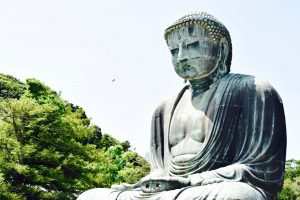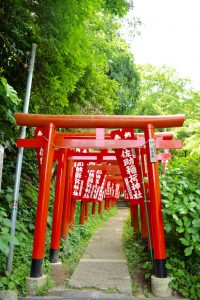I think there’s something to be said about a change of scenery. I know I’ve only been in Tokyo for about a week now, and I lived in Boston for 10 weeks last summer, but I guess I’m just not much of a city person. So hiking in Kamakura today was an incredibly fun and refreshing experience. I thoroughly enjoyed climbing and hiking and just enjoying the natural scenery (including several views of Mt. Fuji!). I was talking about this a little bit with Ethan, but it felt cooler in Kamakura than in Tokyo, probably because Tokyo is an urban heat island and in Kamakura we were surrounded by trees and breeze. Maybe I’m raving about this a little too much (and I guess you can only say so much about a hike), but I felt very much in my element today with hawks and crows soaring overhead and dragonflies darting in and out of shrine beams.
I think the hike put a different spin on the the shrines and historical places we visited as well. It’s hard to put into words. Learning about Shinto and Buddhism and Japan’s history through shrine and temple visits is definitely an interesting and novel experience for me, but I think sometimes it’s a lot to absorb at once, especially given how many we’ve been going to. Maybe it’s a matter of putting places into context and separating them in my mind. The Kamakura shrines were distinct to me because we hiked there and climbed 103 steps and because they were outside of urban Tokyo. Oh and it’s kind of hard to forget a giant statue of the Buddha (Daibutsu; literally “giant Buddha”) at Koutokuin. At our last stop (another shrine), we were witness to not one, but two traditional Japanese-style weddings. We caught the tail end of one and the beginning of another. Very cool!






